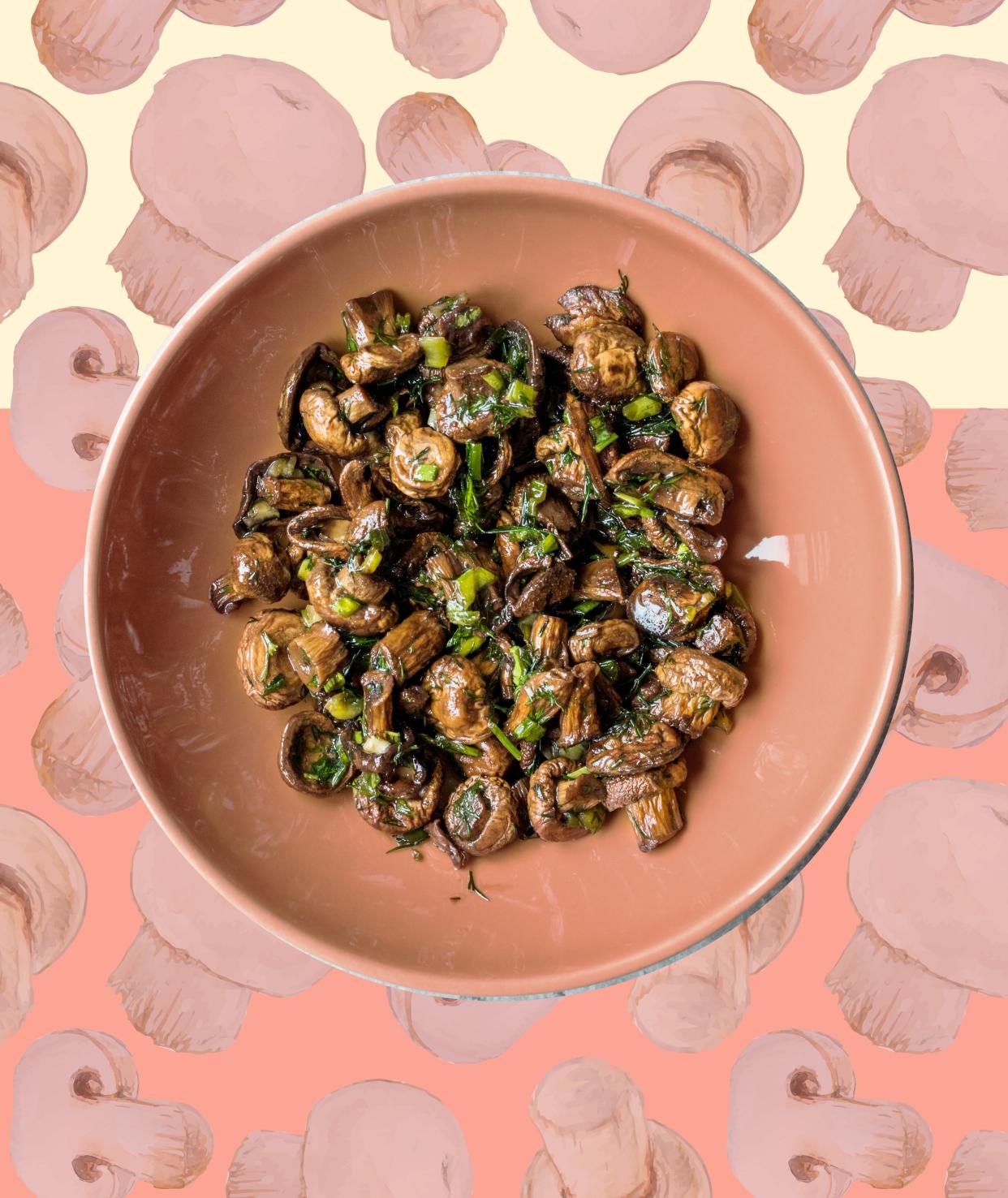The Genius Trick to Cooking Perfectly Roasted Mushrooms

Bid mushy mushrooms goodbye with this extra simple step.
Mushrooms are one of those foods that when cooked and prepared properly, they’re absolutely luscious. But flub the prep work and you’ll be left with a plate full of spongy, slimy, sad-looking fungus. No fun. Raw mushrooms aren’t too tasty, either.
There are many delicious methods for how to cook mushrooms, but we think roasting them is one of the best—the high and dry heat can bring out all their savory, meaty, deeply complex flavors. But even roasting can lead to soggy-textured mushrooms. Thanks to their spongey structure (similar to eggplants), mushrooms are highly prone to emitting a lot of moisture as they cook. It’s near impossible for mushrooms to brown until this water has evaporated, because the moisture makes it difficult for them to reach a high enough internal temperature. Rather than getting crispy in the oven, mushrooms tend to sit and steam in their oven juices. The resulting texture is anything but browned.
Here’s the simple solution to stopping your mushrooms from getting soggy: after 10 to 20 minutes of roasting, simply drain off the liquid that’s pooled on your roasting pan before returning it to the oven. Not only will this dramatically improve the caramelization and crispness of your resulting mushrooms, but it will cut down your cook time by about ten minutes (!).
RELATED: This Clever Cooking Trick Will Seriously Upgrade Your Roasted Vegetables
We recommend tossing quartered cremini or button mushrooms in olive oil, salt, pepper, and herbs and transferring them to a sheet tray—make sure they’re in a single layer so they don’t steam each other—before roasting for 15 minutes at 375°F. Drain the liquid, then return the baking sheet to the oven for another half hour or so until they’re well-browned on the outside and tender on the inside.
Final word of advice: rather than dumping the mushroom liquid down the sink, save it and use it to a make delicious umami-rich sauce for your dish. It can also be used as a sauce for another component of your meal that could use a salty, savory flavor boost (think of it like soy sauce)—it’ll pair perfectly with polenta, risotto, beef stew, or orecchiette recipes.

